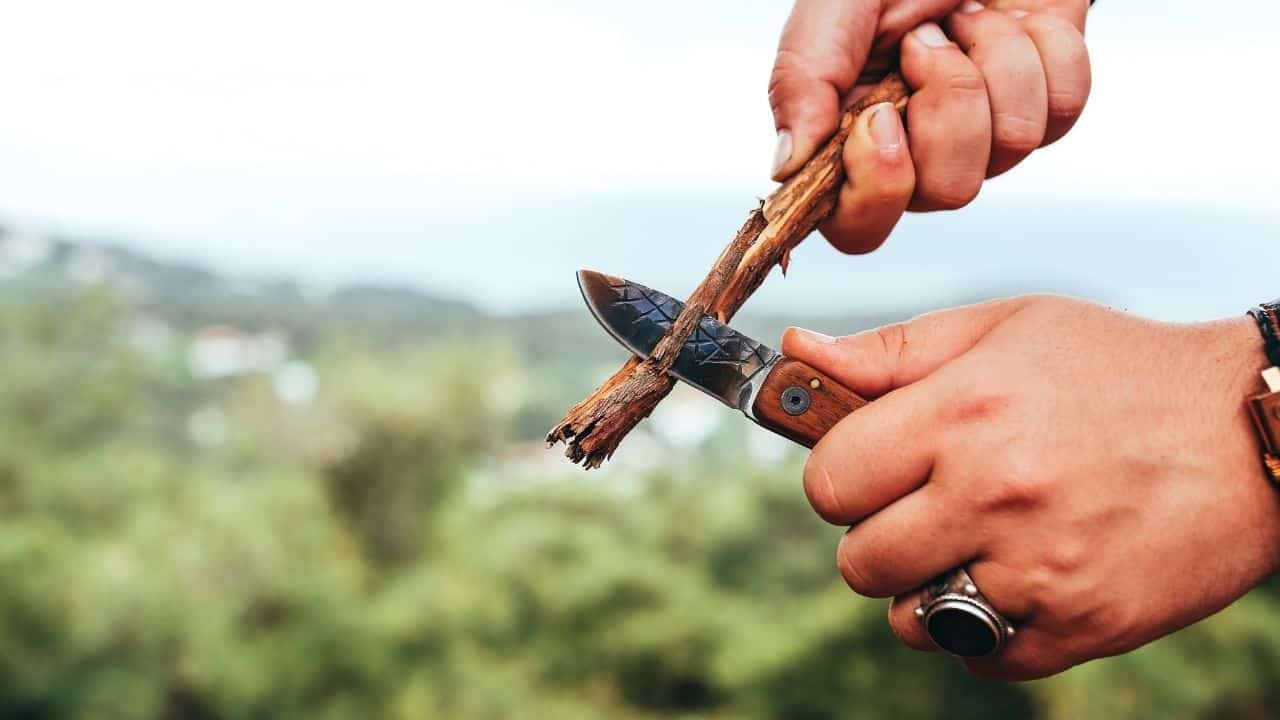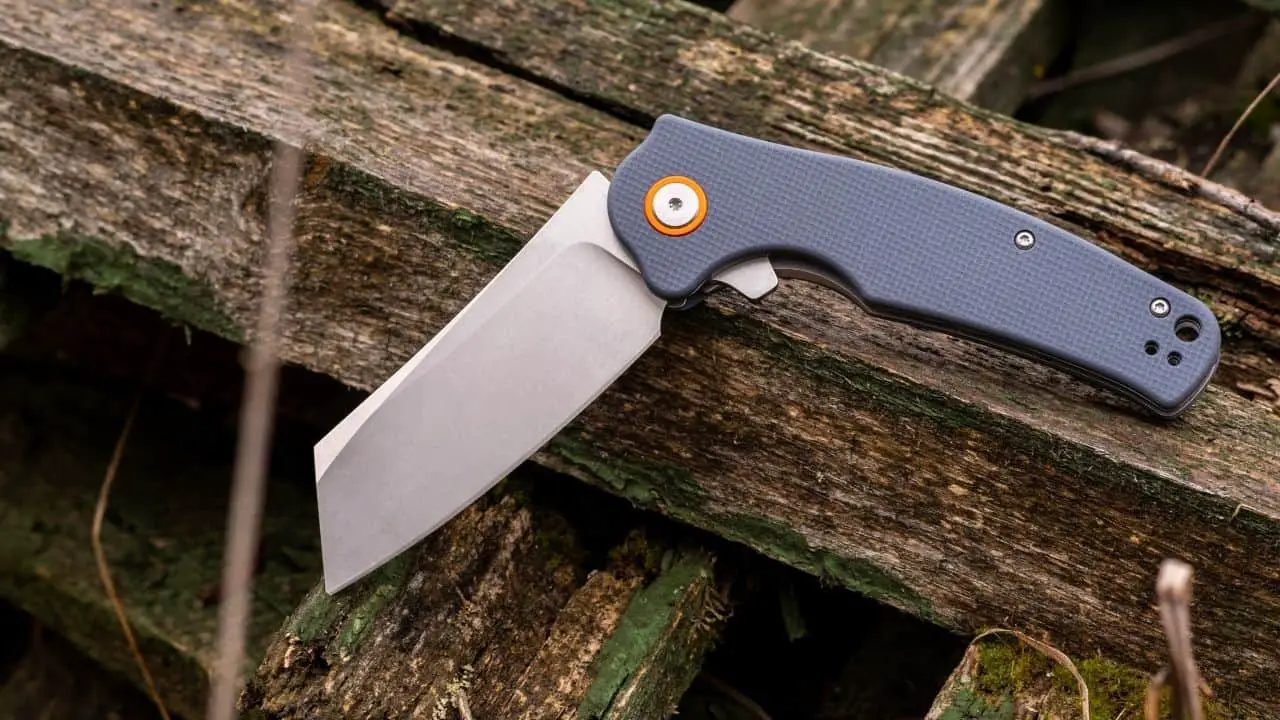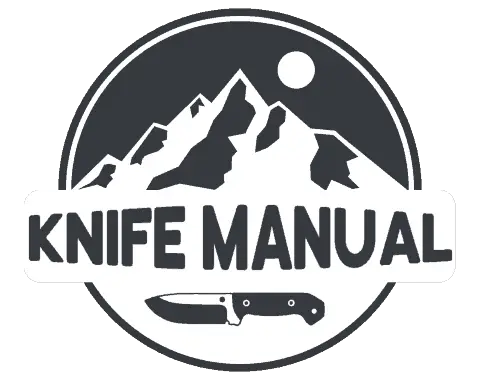Knives are often portrayed and seen as dangerous objects, but how accurate is that common view of knives? Sure they often have incredibly sharp blades, but are they that dangerous with the proper training and precautions? Let’s take a look at the facts and a few of the potential dangers of knives so that you can form a well-thought-out opinion on whether knives are dangerous or not.
Knives are not inherently dangerous, although they are sharp and can cause harm if used in a particular way. The real danger when it comes to knives is the user of the blade. Knives can be used to cause harm and for self-defense, but they can also serve as harmless tools to do practical tasks.
There is a lot of nuance and conflicting views when it comes to the question of whether or not knives are dangerous. Politics and biases aside, let’s take a more in-depth look at the real dangers of using a knife and how you can make it safer for yourself and others around you.
Table of Contents
Are Knives Dangerous?

When it comes to assessing how dangerous knives are, it’s actually a lot simpler than you might think. In their most basic form, knives are relatively small, sharp blades with handles. For a more formal explanation, here is the dictionary definition of a knife:
“a cutting instrument consisting of a sharp blade fastened to a handle”
Source: Merriam-Webster Dictionary
Without getting too philosophical, an inanimate object such as a knife cannot by itself cause a lot of harm. Sure, there could be accidents, but a knife cannot suddenly stand up and begin to harm anyone.
Therefore, the real danger and problem when it comes to knives are the humans using them.
The most dangerous aspect of knives is the way that we use and view them. With the right information and experience, someone can safely use a blade to perform various practical tasks that can help improve their lives and the lives of others.
Knives can be extremely dangerous if they fall into the wrong hands or are misused, but they are relatively harmless by themselves.
The Dangers of Fixed Blade Knives
Fixed blade knives are used in a variety of different industries and situations. There are many iterations and versions of fixed blade knives, ranging from high-end chef’s blades to cheesy-looking tactical knives.
But no matter what knife you have or what you use it to accomplish, the same primary set of dangers are present. The blade of a fixed blade knife is the primary danger you need to be aware of when using one.
Many factors come into play to determine how dangerous using a fixed blade knife is in any given situation. Your experience using a blade, who or what is around you, what task you are trying to complete, and a million other things play a part in the safety of using a fixed blade knife.
One upside that makes fixed blade knives much safer than their counterparts, folding knives, is that the blade doesn’t move unless you move it. There are typically no moving parts on a fixed blade knife that you need to be aware of and control.
Below is a list of some of the most significant dangers that you face when using a fixed blade knife:
- You can accidentally hit something or someone near you if you’re not careful and have complete control over your blade.
- Your hand can slip while using your knife and cause you to lose control of your blade and hit yourself.
- While less likely, there is the chance your knife can break and cause you to lose control of your blade.
- A fixed blade knife’s sharp blade can cause issues and accidents because there is no built-in way to cover the blade’s edge when not in use.
The Dangers of Folding Knives
Folding knives have many of the same dangers and risks associated with fixed blade knives, but the addition of a moving element can make them a little more dangerous in many cases.
There are many versions and types of folding knives, but they all tend to have a folding mechanism located near their center that allows you to open and close the knife blade. This folding mechanism can be both a danger and a safety feature.

The folding mechanism on a folding knife allows you to protect and cover the blade when you’re not using it, which can help avoid many accidents. The folding mechanism can also be quite unpredictable and can cause you to expose the sharp blade accidentally.
Many modern folding knives have a locking mechanism built into their folding mechanism to allow more control over the knife’s open and closing.
Below are a few of the most significant dangers that you can come across when using a folding knife:
- While it is unlikely, there is a chance your folding knife will break and force you to lose control of your blade when you’re using it.
- You can accidentally hit anything or anyone within your knife’s reach when you’re using it to perform a task.
- Your hand can slip, causing you to lose control of your blade and hit yourself.
- Your folding knife can fold unexpectedly and cause injury.
Things You Can Do To Make Using a Knife Safer
Now that we’ve gone over many of the primary risks associated with folding and fixed blade knives let’s take a look at a few of the things you can do to make using a blade safer for yourself and the people around you.
Practicality and common sense play a key role in staying safe while using a knife. Before using a sharp object, especially a knife, make sure you are calm, prepared, and know the potential risks associated with the activity.
Always Cut Away From Yourself
One of the best pieces of advice for using a knife safely, especially if you are a beginner, is always to cut away from yourself.
Whenever you’re using your knife to cut an object, make sure the blade always has momentum away from your body. You should almost never have momentum behind a blade facing your body because a small mistake can end catastrophically.
As your knife skills progress, there may be specific instances where you must cut towards yourself for a brief second. However, for most people, cutting towards yourself is very unsafe and is just asking for trouble and a trip to the emergency room.
Keep Your Blade Sharp
Contrary to what you might think, a sharper knife blade is often much safer than a dull one. If you’re new to knives, this sounds completely crazy, but it’s the truth.
To ensure you are as safe as possible, sharpen your knife blade regularly and keep it razor-sharp.
There are many reasons for sharp blades being safer than dull ones, but the primary reason is that a sharp blade doest get caught on materials often and gives you more control over your blade. Control over your knife edge is the key to using it safely, and a dull blade can sometimes make you apply a lot of pressure to cut through things to the point where you lose control of your knife.
Don’t Let Your Knife Rust
Rust is a big problem for knife blades, and it is best to make sure your knife doesn’t rust. Not only is a rusty knife blade not very pleasant to look at, but it can contaminated materials that you cut with your knife.
Cooking food with a rusty knife or using it on objects that indirectly come into contact with food can cause serious problems. A clean blade also ensures that you are less likely to introduce rust particles into your bloodstream if you accidentally cut yourself or someone else with your knife.
Rust has many other destructive qualities that can completely destroy your blade if left unattended. For more information, make sure to check out my article on ways to prevent your pocket knife from rusting .
.
Take It Slow and Be Careful
While it may seem a little obvious, taking it extremely slow and being careful when using a knife is the most effective technique for using your blade safely.
Before whipping out your blade, think through what task you’re about to do. How long is it going to take? What my your surroundings like? Will my surroundings change (such as people moving) while I’m using my knife? Take into consideration your surroundings, the task at hand, your mental state, and any other significant factors that could influence your knife skills.
Once you have determined that it’s safe and logical to use your knife, work slowly, and don’t try to rush whatever task you are setting out to complete. Work methodically and don’t get distracted without putting away your knife safely.
Final Thoughts
Knives are incredible tools that can be used for both good and bad in this world. Knives by themselves are nearly harmless, and it’s the people using them that often give them a lousy reputation and use them for evil purposes.
With the right training, information, and skills, you can safely use a knife to complete tasks that enrich your life and others around you. It all comes down to being careful and thoughtful whenever you use your knife.
If you’re interested, below are a few of the best and most popular pocket knives of all time that I really think you’d enjoy. So go check them out if you’re considering getting your first knife or just expanding your collection!
